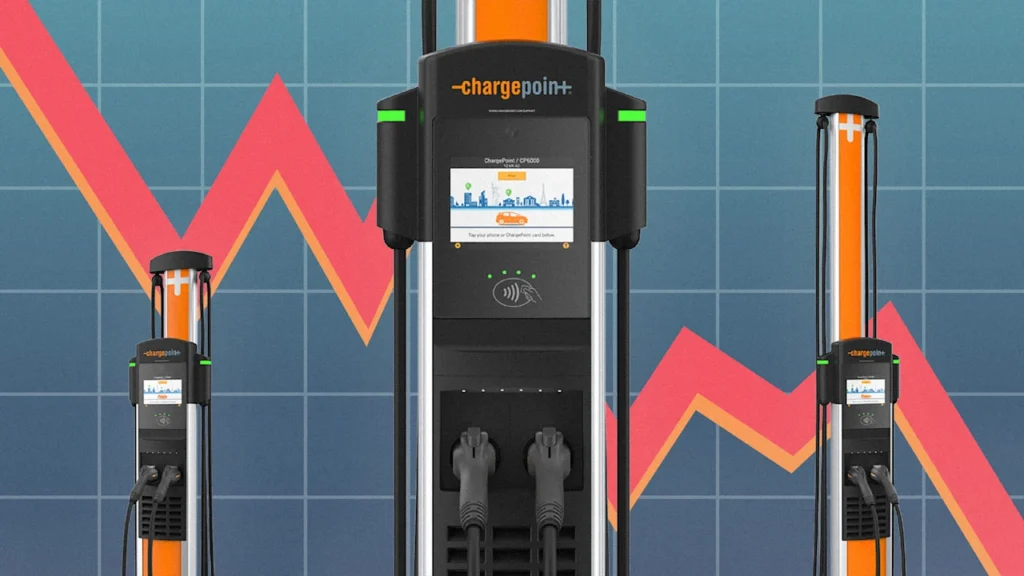
The stock price for the EV charging company ChargePoint Holdings (NYSE: CHPT) went up dramatically this morning—but, for investors, that might not be good news.
ChargePoint just implemented a measure called a “reverse stock split,” a move intended to artificially increase the share price of a company without actually boosting its overall value. Typically, a reverse stock split is used as an effort to prevent a company from being delisted from a stock exchange, and it often signals that said company is struggling financially.
Investors are already demonstrating their wariness: As of this writing, ChargePoint stock is down more than 14% since market open this morning. Here’s what to know about the company’s reverse stock split:
What is ChargePoint?
ChargePoint Holdings is one of the largest EV charging networks in the world. The company operates more than a million chargers in the U.S. and Europe, many of which are free to use and easy to find via the company’s app. In recent years, it’s signed partnerships with Starbucks and Airbnb and helped to electrify an entire village in Senegal.
Despite these milestones, ChargePoint has been navigating a rocky financial period. It reported a net loss of $282.9 million in the fiscal year ending in January, and, on June 5, 2025, it shared that its first-quarter 2026 revenue was down 9% compared to the previous year.
What is a reverse stock split?
A reverse stock split happens when a company boosts the price tag of its stock by combining many shares into one. In the case of ChargePoint, the reverse split took place at a ratio of 1-for-20, meaning that the value of one share today is equal to 20 shares last week.
A reverse stock split doesn’t mean that the company’s overall value has increased—it just means that there are now far fewer shares available, each at a higher cost.
After the reverse stock split, ChargePoint investors will still own the same total value in the company, consolidated into fewer shares. The reverse split was approved by ChargePoint’s shareholders on July 8.
What’s the point of a reverse stock split?
Companies use a reverse stock split when, for a number of reasons, they need to artificially increase the price of their shares. According to a press release, ChargePoint took this measure to “comply with the minimum trading price criteria for continued listing on the New York Stock Exchange (NYSE).”
On the NYSE, listed companies need to maintain an average closing price of at least $1 per share over 30 consecutive trading days in order to meet the exchange’s trading price criteria. In July, ChargePoint consistently traded below that $1 threshold—meaning that, without a reverse stock split, it might have been at risk of delisting.
What does this mean for investors?
ChargePoint’s decision, paired with its recently rough financials, is likely to be a red flag for investors. The stock’s current plummet shows that lack of confidence playing out in real time, demonstrating that the company is in a rough spot and is taking extreme measures to prevent delisting.
In the past several years, other companies including WeWork, Virgin Galactic Holdings, and Nikola have used a similar strategy to continue trading.


